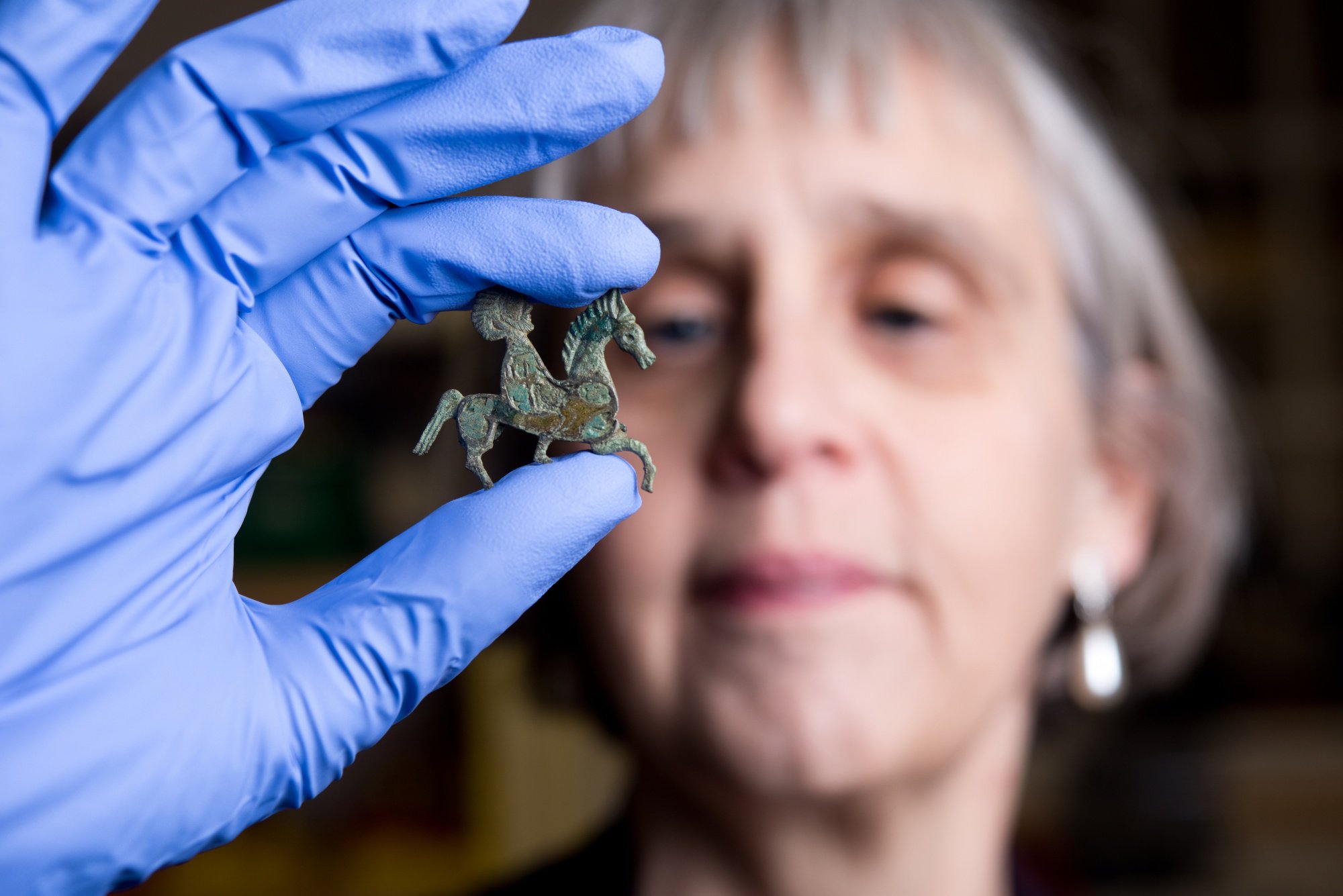Arbeia Jewellery

Interview: Roman Jewellery
Archaeologist Alex Croom answers questions about the jewellery found on, or near Arbeia Fort site.
Is there any evidence that jewellery would have been made on site?
In our most recent excavations just outside the fort, in the civilian settlement, we found part of a metalworker’s workshop. We found crucibles (small pots) used for melting metal, a small fragment of gold and an unfinished silver ring. It is also likely that there was a jet-working workshop somewhere near the fort, as we have a large collection of jet objects and lumps of raw jet, although we have no idea exactly where it was.
Did Romans consider seal rings to be jewellery?
Yes. At first seal rings have stones with pale coloured stones where the engraving is not very visible, but then darker stones like red jasper became fashionable and the engravings are much clearer. In addition, we found many stones with very similar designs on them, which were probably seen as both jewellery and lucky charms.
Would Romans have bought jewellery made by local people?
In the first and second centuries, there was a fashion for glass bangles. The native people got broken glass from the Romans (by the way, when I say ‘Romans’ I mean anyone who’s living in a Roman fashion, including local people). The glass would be taken away and made into glass bangles, some of which they sold back to Romans. Generally, however, the Romans used a much wider range of jewellery than the local people could supply.
Where would Romans buy their jewellery?
Romans bought some of their jewellery from craftsmen outside the fort. They would also have bought it from travelling jewellers who went from town to town, fort to fort, selling their wares. When demand dried up in one area, they would move on to a new market.
How expensive was jet jewellery - was it a luxury item?
Unfortunately, we don’t know! However, we find so much jet that it is unlikely to have been expensive. Not all of what we find is actually jet: some is shale and some is cannel coal, although the Romans did not care as long as it was black and shiny.
The black stone came from many places, including Whitby, Dorset and southern Scotland.
Fashions also changed. Most jet jewellery we have on display at Arbeia will be late third or fourth century in date. This means that you wouldn’t have jet jewellery at the same time as the glass bangles.
Were glass beads and other forms of jewellery imported or brought to Britain as part of someone’s possessions?
Both. Some jewellery and raw materials (like carnelian from India) were imported, while people coming to Arbeia would bring their own jewellery with them.
Would there have been a soldier who might have the skills to repair jewellery?
The craftsmen in the civilian settlement could mend jewellery, but soldiers might sometimes have also mended pieces, as most items of jewellery were fairly simple designs. Soldiers would have been used to repairing their armour using wire and metalworking tools, although some of the repairs we have found are not very skilful. We have one belt buckle that has been repaired in a rather rough way!
Arbeia Jewellery
Materials
- Gold: (very small quantity) - a finger-ring, an ear-ring, part of a necklace
- Silver: (very small quantity) - finger-rings, an ear-ring
- Copper alloy (brass, bronze, copper – all different shades): finger-rings, ear-rings, bracelets, anklet, hair-pins
- Glass: beads in blue and green (the most popular colours), bracelets, hair-pins
- Jet/shale: bracelets, finger-rings, necklace beads, bracelet beads, hair pins
- Bone: (lots) - hair-pins, bracelets, one finger-ring
- Iron: finger-rings, hair-pins, a bracelet
Semi-precious stones
- Our gold earring may have had a pearl hanging from it. Pearls were the most expensive type of jewellery in the Roman world. Romans could not cut diamonds
- Two cameos of sardonyx (a stone imported from India), both probably from the Imperial household rather than everyday items
- We have a few amber beads
- Intaglios of amethyst, carnelian (common), red jasper (also common) and glass, usually blue, green or black, which were cheap versions of the stone intaglios
Brooches
- Most brooches were functional rather than ornamental. Women wore them in the first and second century to fasten their tunic, but by the late second- century they were not using brooches at all
- Men wore them to fasten their cloaks, and generally only soldiers (civilians wore capes that did not need a brooch)
- There are a few examples of brooches in the shape of animals and objects such as a shoe, which may have been purely ornamental




